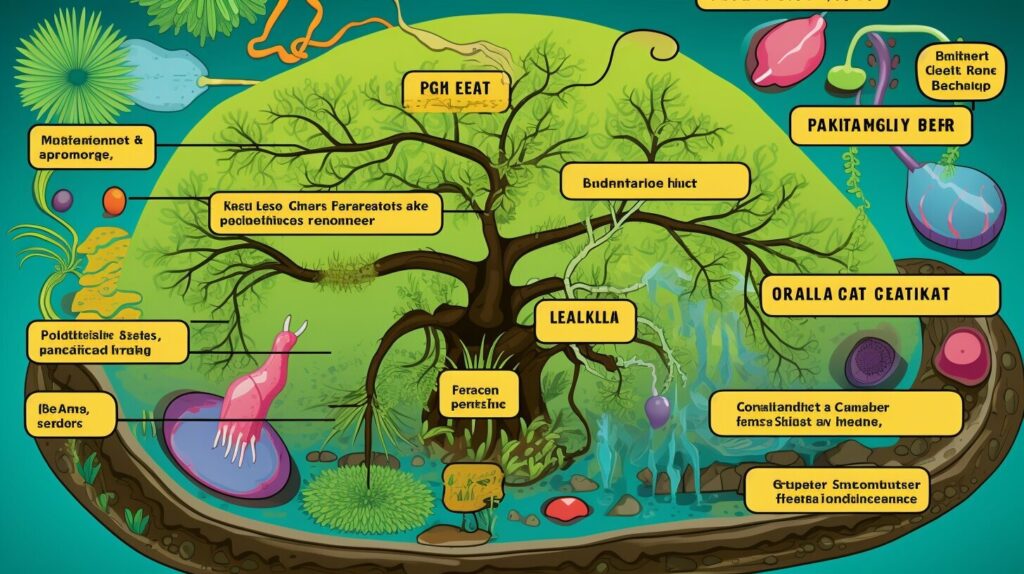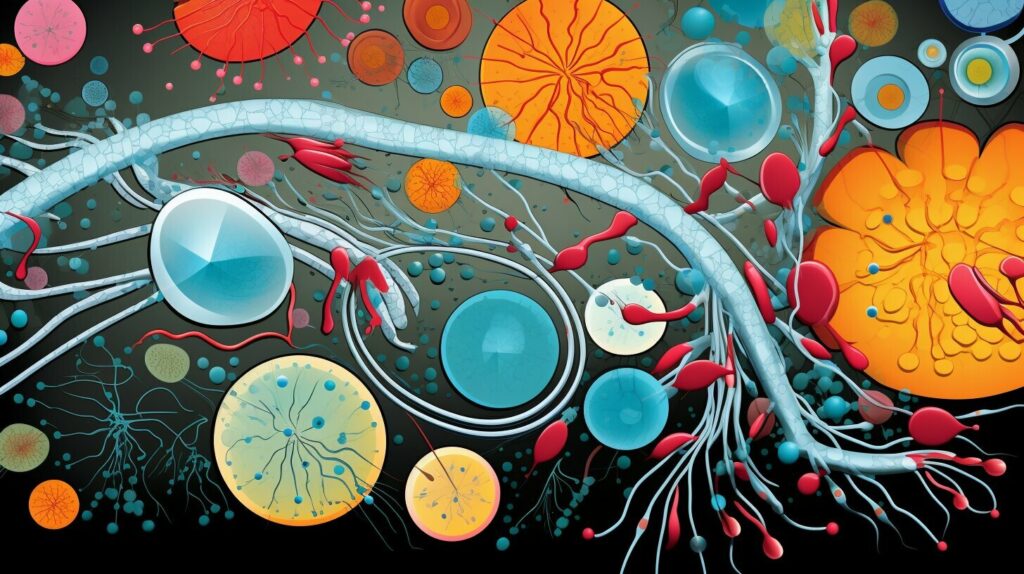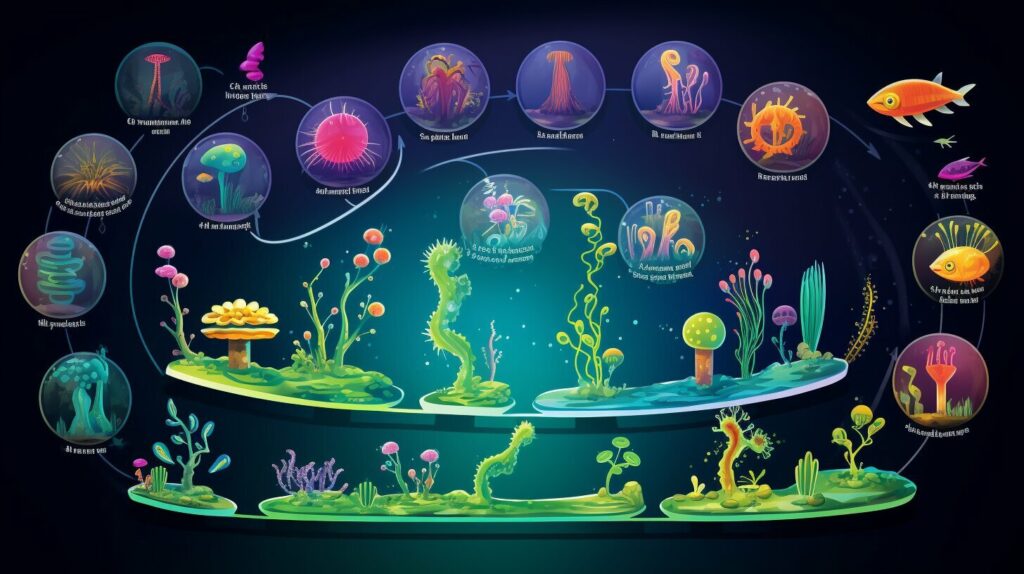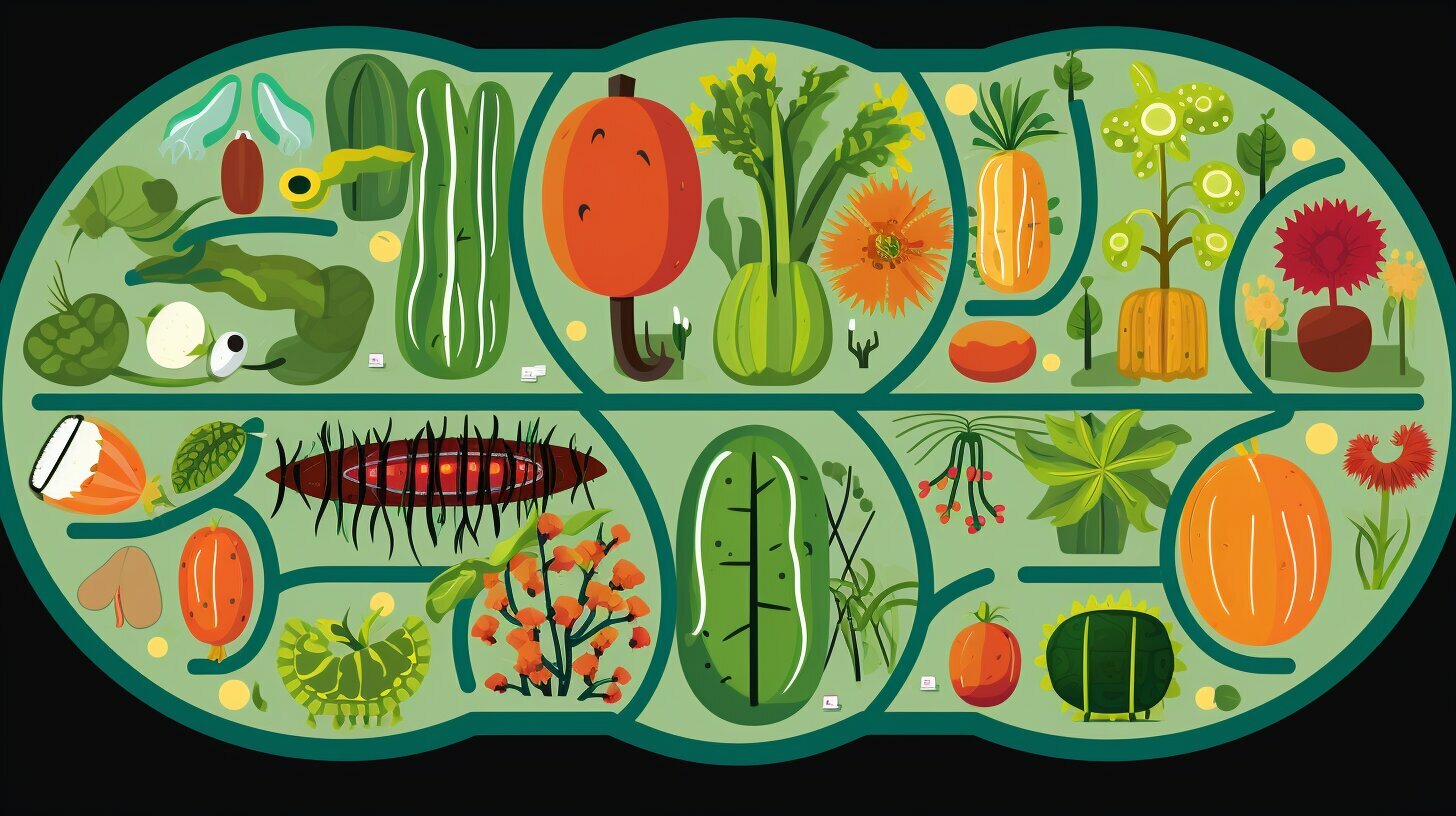Plants have always been a fascination for me, especially their intricate cellular structure and the complexity of their biology. One question that has intrigued me is whether plants are prokaryotic or eukaryotic. In this article, I will explore this question and take you on a journey through the fascinating world of plant cells, their classification, and evolution.
Plant cells are the basic building blocks of plants and are responsible for various functions such as photosynthesis, energy production, and nutrient storage. They are also unique in their cellular structure, making them different from other organisms. Understanding plant cell structure is crucial to understanding plant biology and how plants have evolved over millions of years.
Plant classification is another exciting area of study, where plants are categorized based on their characteristics and evolutionary relationships. By examining plant classification, we can better understand the diversity of plant life and how different plants have adapted to various environments.
So, are plants prokaryotic or eukaryotic? The answer is eukaryotic. Plant cells contain a nucleus and other complex membrane-bound organelles, which are the hallmark of eukaryotic cells. However, there are prokaryotic organisms present in plants that play critical roles in their growth and development, such as certain bacteria that help plants fix nitrogen from the environment.
- Plant cells are eukaryotic in nature, containing a nucleus and other complex organelles.
- Understanding plant cell structure is crucial in understanding plant biology.
- Plant classification helps us understand the diversity of plant life and how different plants have adapted to various environments.
- Prokaryotic organisms are present in plants and play critical roles in their growth and development.
- The interplay between prokaryotes and eukaryotes in plants is essential to their survival and evolution.
Understanding Plant Cell Structure
Plants are made up of cells, and understanding the structure of plant cells is key to understanding the functioning of plants. Plant cells have a unique composition that sets them apart from other organisms. The cell wall is a defining feature of plant cells, providing structural support and protection.
Within the cell wall, there are several other important components, including the cell membrane, nucleus, cytoplasm, and various organelles. The cell membrane is a semi-permeable barrier that allows certain substances to enter and exit the cell, while keeping others out. The nucleus contains genetic material, which is responsible for controlling the cell’s functions and determining its characteristics.
The cytoplasm is a gel-like substance that fills the space between the cell membrane and nucleus. It contains various organelles, including mitochondria, which are responsible for producing energy, and chloroplasts, which are responsible for photosynthesis.
Plant cells also contain vacuoles, which are storage compartments that hold water, nutrients, and other substances. These vacuoles play a crucial role in maintaining the turgor pressure of the cell, which is important for plant growth and structure.
Overall, the structure of plant cells is fascinating and complex. Each component plays a vital role in the cell’s functioning, and together they allow plants to grow, reproduce, and thrive.

Exploring Plant Classification
One of the most fascinating aspects of plants is their incredible diversity. From towering trees to delicate flowers, plants come in all shapes and sizes. To make sense of this diversity, scientists have developed a system of plant classification based on their characteristics and evolutionary relationships.
In general, plants are classified into two major groups: vascular and non-vascular. Non-vascular plants, such as mosses and liverworts, do not have specialized tissues for transporting water and nutrients. Vascular plants, on the other hand, have specialized tissues, such as xylem and phloem, that allow them to transport fluids throughout their bodies.
Within these two major groups, plants are further classified into a variety of subgroups based on their features. For example, seedless vascular plants include ferns and horsetails, which reproduce through spores rather than seeds. Gymnosperms, such as conifers, have seeds that are not enclosed in a protective structure. Finally, angiosperms are flowering plants that produce seeds enclosed in a fruit.
To help scientists keep track of all these different groups, plant taxonomy has developed a system of naming plants based on their characteristics. This system is similar to the way that animals are classified by genus and species. Each plant is given a unique name that reflects its characteristics and evolutionary relationships.

“The study of plant classification is a never-ending journey of discovery, as new plant species continue to be discovered and our understanding of their relationships evolves.”
Conclusion
Plant classification and taxonomy provide a fascinating insight into the diversity of plants and their evolutionary relationships. By grouping plants into different categories based on their characteristics, scientists are able to better understand and appreciate the beauty and complexity of the natural world.
Prokaryotic vs. Eukaryotic Plants
Now that we have a basic understanding of plant cell structure and classification, let’s dive deeper into the fascinating world of plant biology. One of the most intriguing questions in this field is whether plants are prokaryotic or eukaryotic.
Prokaryotic cells are smaller and simpler in structure than eukaryotic cells. They lack a nucleus and other membrane-bound organelles such as mitochondria and chloroplasts, which are typical features of eukaryotic cells. Prokaryotes also have a cell wall made of peptidoglycan, which is absent in eukaryotic cells.
On the other hand, eukaryotic cells have a nucleus and other membrane-bound organelles, as well as a more complex cytoskeleton. Plant cells are eukaryotic cells and therefore have these distinguishing characteristics.

However, it is important to note that some prokaryotes do play a crucial role in plant biology. For example, certain bacteria in the rhizosphere of plant roots fix nitrogen, making it available to the plant. Other bacteria act as biocontrol agents, protecting plants from pests and diseases.
Similarly, eukaryotes such as fungi and algae also have important interactions with plants. For instance, mycorrhizal fungi form symbiotic relationships with plants, providing them with nutrients such as phosphorus and receiving carbohydrates in return. Algae living in plant tissues may also play a role in photosynthesis, contributing to the plant’s energy production.
In conclusion, while plants themselves are eukaryotic organisms, prokaryotic and eukaryotic organisms play important roles in plant biology. Understanding the interplay between these organisms is crucial for comprehending the complexity and diversity of the natural world.
The Evolution of Plants
The evolution of plants is a fascinating journey that spans over 500 million years. From simple, primitive organisms to the diverse and complex flora we see today, plants have undergone a remarkable transformation.
It all started with algae, the first photosynthetic organisms that lived in water. Over time, some algae evolved into simple, terrestrial plants that could live on land. These early plants lacked roots, stems, and leaves and relied on absorption of water and nutrients through their surface.
However, as they adapted to life on land, they developed more complex structures, including true roots, stems, and leaves. This allowed them to grow taller and to explore new environments. The evolution of seeds further enabled them to colonize new habitats and survive harsh conditions.
One of the most significant events in plant evolution was the emergence of flowering plants or angiosperms, which appeared around 140 million years ago. These plants transformed the landscape by producing diverse flowers and fruits, which enabled more efficient reproduction and dispersal of seeds.
The evolution of plants is also intertwined with the evolution of other organisms. For instance, the rise of herbivorous animals led to the coevolution of plants and their predators. Plants developed various defense mechanisms, such as thorns, toxins, and chemical signals.
Furthermore, the symbiotic relationships between plants and certain organisms, such as mycorrhizal fungi and nitrogen-fixing bacteria, have greatly influenced the evolution and ecology of plants.
As we continue to explore the mysteries of plant evolution, we deepen our understanding and appreciation of the natural world. With each new discovery, we unlock the secrets of our planet’s history and draw closer to the marvels of life.

Did you know that plants are not just made up of plant cells? There are actually many prokaryotic organisms that live within plants and contribute to their growth and development. One of the most well-known examples is the nitrogen-fixing bacteria that live in the roots of legumes, such as beans and peas.
These bacteria are able to take nitrogen from the air and convert it into a form that plants can use to make proteins and other essential molecules. This is just one example of the many ways in which prokaryotic organisms play a crucial role in the functioning of plants.
Another group of prokaryotes that can be found in plants are the cyanobacteria. These organisms are able to carry out photosynthesis, just like plants, and can even form symbiotic relationships with certain plants, such as mosses and ferns.
One of the most fascinating examples of prokaryotes in plants is the endosymbiotic relationship between plants and certain bacteria known as rhizobia. These bacteria invade the root cells of legumes and form specialized structures called nodules. Within these nodules, the rhizobia are able to convert atmospheric nitrogen into a form that the plant can use.
This mutually beneficial relationship allows the plant to thrive in nitrogen-poor soils, while also providing the bacteria with a safe and nutrient-rich environment to live in. This intricate dance between prokaryotes and plants highlights the incredible complexity of the natural world and the interdependence of all living things.

“The presence of prokaryotes in plants is a testament to the incredible diversity of life on our planet. It reminds us that even the smallest organisms can have a profound impact on the functioning of larger ecosystems.”
Eukaryotic Organisms in Plants
Plants not only interact with prokaryotic organisms, but they also form relationships with eukaryotic organisms. One of the most well-known examples is the relationship between plants and fungi. Fungi form mutualistic associations with plant roots, known as mycorrhizae. Mycorrhizae enhance plant nutrient uptake and help plants tolerate stress factors such as drought and high temperatures.
Another example is the relationship between plants and algae. Algae can live within plant cells, forming a symbiotic relationship known as endosymbiosis. This interaction is particularly evident in lichens, which are composite organisms consisting of a fungus and an alga living together in a mutualistic symbiotic relationship.
Additionally, some plants have developed the ability to trap and digest insects for nutrients. Plants such as pitcher plants and Venus flytraps have specialized structures that lure, trap, and digest insects. These structures are lined with cells containing enzymes that break down insect protein into nutrients that the plant can absorb.
Eukaryotic organisms in plants are key players in enhancing plant growth, nutrition, and survival. Their interactions with plants are fascinating and highlight the complexity of plant biology and evolution.

In conclusion, I have thoroughly explored the topic of plant biology and answered the intriguing question of whether plants are prokaryotic or eukaryotic. Through our journey, we have learned about the intricate structure of plant cells and their vital components. We have also taken a closer look at plant classification and the evolutionary journey of plants over millions of years.
Furthermore, we have discovered the fascinating interplay between plants and prokaryotic and eukaryotic organisms. While prokaryotic organisms, such as bacteria, can form symbiotic relationships with plants to contribute to their growth, eukaryotic organisms, such as fungi and algae, can play a vital role in plant health and survival.
As we continue to uncover more about the wonders of the natural world, the study of plant biology remains a critical component. From the smallest plant cell to the vast diversity of plant species and their interactions with other organisms, the world of plants offers endless possibilities for exploration and discovery.
So, as I conclude this article, I leave you with a deeper appreciation for the vital role of plants in our world, the complexity of their biology, and the exciting possibilities for future research and discovery. Let us continue to marvel at the beauty and diversity of plant life and their incredible contributions to our planet.
FAQ
Q: Are plants prokaryotic or eukaryotic?
A: Plants are eukaryotic organisms.
Q: What is the structure of plant cells?
A: Plant cells have a cell wall, cell membrane, nucleus, cytoplasm, and various organelles such as chloroplasts, mitochondria, and vacuoles.
Q: How are plants classified?
A: Plants are classified into different categories based on their characteristics and evolutionary relationships, including divisions, classes, orders, families, genera, and species.
Q: What are the key differences between prokaryotic and eukaryotic plants?
A: Prokaryotic plants lack a true nucleus and membrane-bound organelles, while eukaryotic plants have a nucleus and membrane-bound organelles.
Q: How have plants evolved over time?
A: Plants have evolved over millions of years, adapting to various environments and developing features that allowed them to thrive on land. They have gone through different stages of evolution, from simple green algae to complex vascular plants.
Q: Are there prokaryotic organisms in plants?
A: Yes, there are symbiotic relationships between plants and certain prokaryotic organisms, such as nitrogen-fixing bacteria, which help fix atmospheric nitrogen into a usable form for plants.
Q: What role do eukaryotic organisms play in plants?
A: Eukaryotic organisms, such as fungi and algae, interact with plants in various ways. Some form mutualistic relationships, providing nutrients or protection to plants, while others can be harmful pathogens.
Q: What have we learned about plant biology through this exploration?
A: Through this exploration, we have gained a deeper understanding of plant cell structure, plant classification, plant evolution, and the interactions between plants and other organisms. It has expanded our knowledge of plant biology and the intricate web of life.




